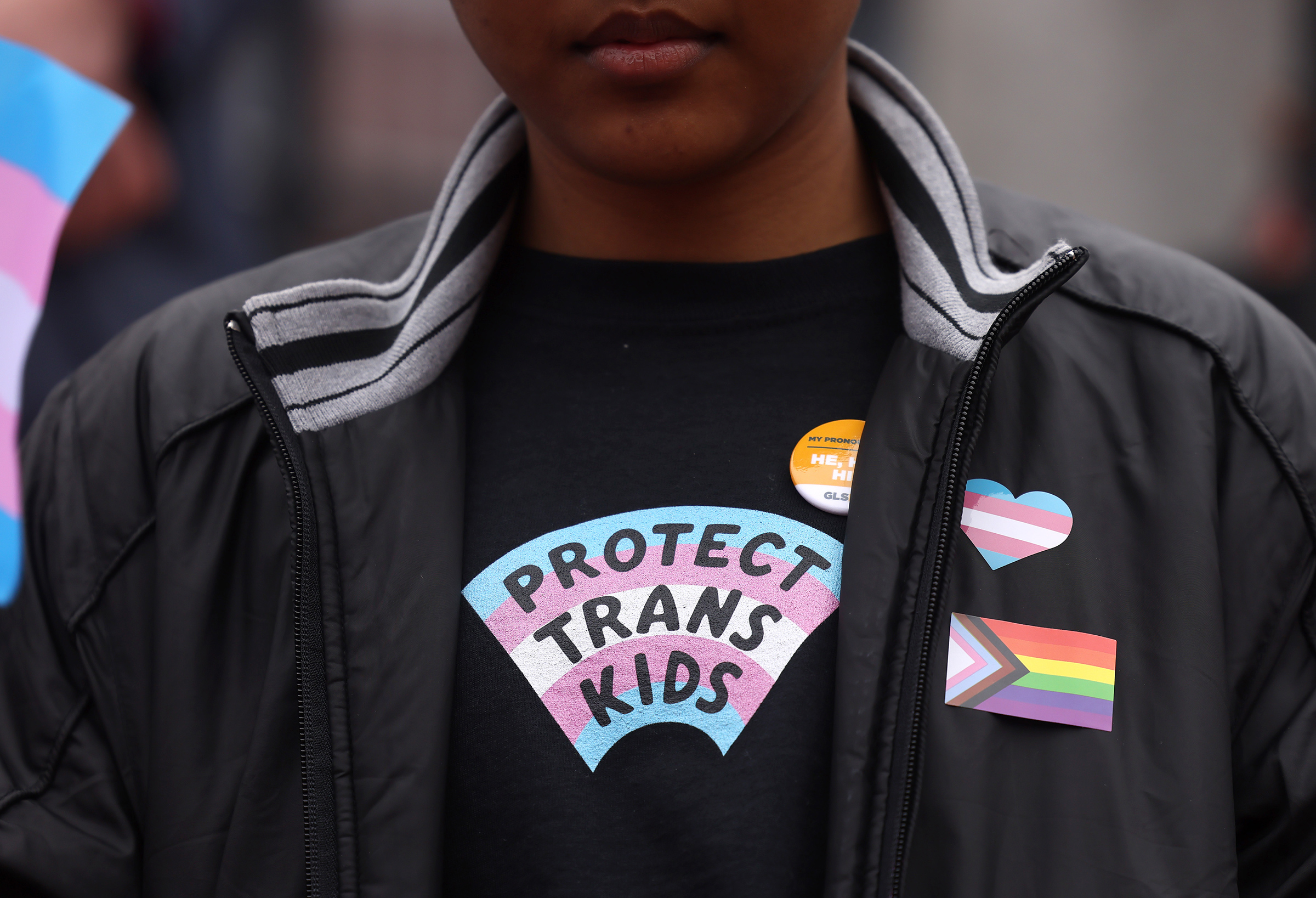
A new study by the LGBTQ suicide prevention nonprofit The Trevor Project found that over the past three years, the rates of suicidal thoughts have trended upward among LGBTQ youth in America.
The survey, published Wednesday, found that 45% of LGBTQ youth had seriously considered attempting suicide in the past year, and LGBTQ youth of color reported higher rates of considering suicide than their white peers. That’s a five percentage point increase overall from three years ago and a continuation of an alarming trend: comparing The Trevor Project’s annual national surveys over the past three years, reports of LGBTQ youth seriously considering suicide have increased from 40% to 42% to 45%.
The numbers are particularly stark when it comes to trans and nonbinary young people. 59% of transgender boys and men reported seriously considering suicide in the past year, as did 53% of nonbinary youth and 48% of transgender girls and women. 22% of transgender boys and men reported attempting suicide in the past year, compared to 6% of cisgender boys and men.
“I think that the biggest takeaway overall is that LGBTQ youth suicide is a public health crisis, and that so many of the challenges that are coming up in the world over the past three years are only exacerbating the crisis that we already knew existed,” says Amit Paley, the CEO and Executive Director of The Trevor Project.
The nonprofit collected data through an online survey platform between September 20 and December 31, 2021. The survey polled 33,993 individuals ages 13-24 across the United States who were targeted for the survey through ads on social media. 45% of respondents reported being LGBTQ youth of color and 48% reported being trans or nonbinary. (Respondents were defined as being LGBTQ if they identified with a sexual orientation other than heterosexual, a gender identity other than cisgender, or both.)
LGBTQ youth face unique stressors that could exacerbate mental health concerns. Conservative state lawmakers have introduced a surge of bills targeting LGBTQ youth in the past two years, and roughly 240 anti-LGBTQ bills have been filed in 2022 alone, with roughly half specifically targeting trans people, according to a March 20 NBC News analysis. Lawmakers have particularly focused on trans youth, and 15 states have banned trans students from playing on sports teams consistent with their gender identity. Two states have passed laws banning classroom instruction about sexual orientation and gender identity in certain grade levels. Three states have banned young people from accessing gender-affirming care. In March, Republican Texas Governor Greg Abbott directed state officials to investigate the families of trans youth who’d received such care for child abuse.
Read More: History-Making Trans State Legislator Danica Roem’s Roadmap for Protecting LGBTQ Kids
LGBTQ advocates warn such laws could have dangerous consequences. “We also hear from young people who are not in the states that are impacted by these laws yet, but who are just worried that there are so many people in the country who are using their time to attack LGBTQ kids,” says Paley. The report found that 60% of LGBTQ youth who wanted mental health care in the past year reported not being able to access it.
The data suggest taking steps to create an affirming home or school environments could be crucial suicide-prevention tools. The report found that fewer than 1 in 3 trans and nonbinary youth felt affirmed in their gender at home, and LGBTQ youth who felt high social support from their family reported attempting suicide at less than half the rate of those who felt low or moderate social support. The survey found that LGBTQ youth who reported their school to be LGBTQ-affirming also reported lower rates of attempting suicide. “Sometimes people look at a broad social trend like this, and they think about laws that need to change, policies that need to change, and those do need to happen,” Paley says. “But every single person has the ability to create a different experience for the young people in their life.”
The worsening mental health concerns for LGBTQ youth fit into a broader trend in the country. In December 2021, the U.S. surgeon general issued a rare public warning that young Americans are facing a “devastating” mental health crisis driven by the particular challenges of their generation, including two years of a global pandemic that exacerbated isolation and loneliness. But even before the pandemic, in 2017, 13% of U.S. teens ages 12 to 17 said they’d experienced a major depressive episode in the past year, up 8% from 2007, according to a Pew Research Center analysis of data from the 2017 National Survey on Drug Use and Health.
If you or someone you know may be contemplating suicide, call the National Suicide Prevention Lifeline at 1-800-273-8255 or text HOME to 741741 to reach the Crisis Text Line. In emergencies, call 911, or seek care from a local hospital or mental health provider.
More Must-Reads From TIME
- The 100 Most Influential People of 2024
- Coco Gauff Is Playing for Herself Now
- Scenes From Pro-Palestinian Encampments Across U.S. Universities
- 6 Compliments That Land Every Time
- If You're Dating Right Now , You're Brave: Column
- The AI That Could Heal a Divided Internet
- Fallout Is a Brilliant Model for the Future of Video Game Adaptations
- Want Weekly Recs on What to Watch, Read, and More? Sign Up for Worth Your Time
Write to Madeleine Carlisle at madeleine.carlisle@time.com